Schneider MTN6304-0019 Handleiding
Schneider
Bewegingsdetector
MTN6304-0019
Bekijk gratis de handleiding van Schneider MTN6304-0019 (19 pagina’s), behorend tot de categorie Bewegingsdetector. Deze gids werd als nuttig beoordeeld door 50 mensen en kreeg gemiddeld 5.0 sterren uit 25.5 reviews. Heb je een vraag over Schneider MTN6304-0019 of wil je andere gebruikers van dit product iets vragen? Stel een vraag
Pagina 1/19

KNX Application Description for
KNX High Bay presence detector FM MTN6304-0019
KNX High Bay presence detector MTN6354-0019
KNX Corridor presence detector FM MTN6305-0019
Corridor presence detector KNX MTN6355-0019
Mini presence detector KNX MTN6303-0019

- 4 -
Application description KNX High Bay, Corridor Presence Detector and Presence Mini
Contents
Application description KNX High Bay, Corridor Presence Detector and Presence Mini
1 Detector functions ............................................................ 5
1.1 Functions .......................................................................... 5
1.2 Light output ....................................................................... 5
1.3 Constant lighting control output....................................... 6
1.3.1 Calibration ......................................................................... 6
1.3.2 Calibration procedure ....................................................... 6
1.3.3 Control speed ................................................................... 6
1.3.4 Second output .................................................................. 6
1.4 Basic illumination output .................................................. 6
1.5 Presence output ............................................................... 7
1.6 Absence output ................................................................ 7
1.7 HVAC output ..................................................................... 7
1.8 Twilight Switch output .................................................. 7
1.9 Brightness output ............................................................. 7
1.10 Sabotage output ............................................................... 7
1.11 Logic gate ......................................................................... 7
2 Interconnection ................................................................. 7
3 Fully and semi-automatic ................................................. 7
4 Switching between day/night ........................................... 7
5 Remote control, programming mode and
feedback LED ................................................................... 7
5.1 Remote control ................................................................. 7
5.2 Remote control and programming mode ........................ 7
5.3 Programming mode via button......................................... 8
5.4 Brightness LED ................................................................. 8
6 Changing values via bus .................................................. 8
7 Behaviour after a bus voltage failure and return
as well as on re-starting and downloading ...................... 8
8 Behaviour after initial start-up and unloading .................. 8
9 Communication objects ................................................... 8
9.1 List of communication objects for KNX Presence
Production and KNX Presence Corridor .......................... 8
9.2 List of communication objects for
KNX Presence Mini ........................................................... 9
9.3 Description of Object Feedback
(Highbay and Corridor) ................................................... 10
9.4 Description of light X communication objects
(see 1.1 Functions) .......................................................... 10
9.5 Description of constant lighting control
communication objects .................................................. 11
9.6 Description of presence output
communication objects .................................................. 12
9.7 Description of absence communication objects ........... 12
9.8 Description of HVAC communication objects ............... 12
9.9 Description of twilight switch communication objects .. 13
9.10 Description of brightness communication objects ........ 13
9.11 Description of sabotage communication objects .......... 13
9.12 Description of logic gate communication objects ......... 13
10 ETS parameters .............................................................. 14
10.1 Express settings ............................................................. 14
10.2 Light X ............................................................................. 14
10.2.1 Light X "General parameters" ......................................... 14
10.2.2 Light X "Brightness" ....................................................... 15
10.2.3 Light X "Basic illumination" (for dimming level only) ..... 15
10.2.4 Light X "Day/night parameters"...................................... 15
10.2.5 Light X "Lock" ................................................................. 16
10.3 Constant lighting control ................................................ 16
10.3.1 Constant lighting control "General parameters" ............ 16
10.3.2 Constant lighting control "Brightness"........................... 17
10.3.3 Constant lighting control "Basic illumination"
(see 10.2.3) ..................................................................... 17
10.3.4 Constant lighting control "Day night parameters" ......... 17
10.3.5 Constant lighting control "Lock" .................................... 18
10.4 Presence ......................................................................... 18
10.5 Absence .......................................................................... 18
10.6 HVAC ............................................................................... 19
10.6.1 HVAC output "General parameters" ............................... 19
10.6.2 HVAC "Lock" ................................................................... 19
10.7 Twilight switch ................................................................. 19
10.8 Brightness ....................................................................... 19
10.9 Sabotage......................................................................... 20
10.10 Logic gate X (all identical) ............................................... 20

- 5 -
Application description KNX High Bay, Corridor Presence Detector and Presence Mini
1 Detector functions
The sensors consist of passive infrared motion detectors with inte-
grated brightness sensor. All detectors are provided with an infrared
communication interface via IR remote control as well as an LED for
indicating feedback.
The following detectors are available:
KNX High Bay Presence Detector: The PIR presence detector
comprises three passive infrared (PIR) motion detectors with inte-
grated brightness sensor, integrated IR receiver and integrated red
light-emitting diode (LED) for indicating a movement detected in test
mode.
KNX Corridor Presence Detector: The PIR presence detector
comprises two passive infrared (PIR) motion detectors with inte-
grated brightness sensor, integrated IR receiver and integrated red
light-emitting diode (LED) for indicating a movement detected in test
mode.
KNX Presenced Mini: The PIR presence detector comprises one
passive infrared (PIR) motion detector with integrated brightness
sensor, integrated IR receiver and integrated red light-emitting diode
(LED) for indicating a movement detected in test mode. The feed-
back for programming is signalised with a blue LED.
The following settings must be selected under the general settings:
- Selection of sensor to define the detector used
The detectors can take on the following functions which can be acti-
vated or deactivated in the general settings:
1.1 Functions
- Output, light outputs X – lighting switched ON and OFF for up to X
light outputs
- Output, constant lighting control – constant lighting control for up
to 2 light outputs in addition to the X switched light outputs
- Output, basic illumination – switches to a basic level of illumination
when persons are absent
- Presence output - switching in response to presence irrespective
of brightness
- Presence output – switching in response to presence irrespective
of ambient brightness
- Output, HVAC – switching in relation to presence with the capabil-
ity of taking into account CO2 and/or VOC
- Output, twilight Switch – switching in relation to brightness without
taking account of absence
- Output, brightness – output of the brightness measured
- Output, sabotage – cyclical sending of a telegram
(heartbeat)
- Output, logic gate – switching or scene selection on the basis of
the state of one or more input objects
The function to be used (activated) is defined via the "General Set-
tings" parameter window using the Engineering Tool Software (ETS)
version ETS 4.0 and higher.
Detector Number of light
outputs X
KNX High Bay
Presence Detector 2
KNX Corridor Presence Detector 2
KNX Presence Mini 4
1.2 Light output
The sensor has X independent light outputs. Each output can be
configured with its own switching threshold. There is a choice of sev-
eral data-point types for the output object. Depending on the output
object's data-point type, input objects can be used to permit any
appropriate overriding. Full and semi-automatic operating mode can
be selected for light. The stairecase time can be set to a fixed period
or the IQ mode can be configured. Reach and sensor sensitivity can
be set to suit any situation. A basic level of illumination can also be
selected for each light. A slave input object is available for each out-
put to extend reach.
It is possible to select whether the light output uses motion-detector
logic or presence-detector logic. With motion-detector logic, the
sensor does not switch OFF light in relation to incidental daylight.
With presence-detector logic, lighting is switched OFF if the daylight
component provides a sucient brightness. Presence-detector logic
is configured with an oset. If the brightness measured exceeds the
"switching threshold + oset switching threshold OFF" value, the
output switches OFF.
In example 1, presence is selected at time t1 and light is switched
ON. From now on, presence is detected all the time. The change in
brightness is determined at time t2. Brightness continues to increase
from t3. The brightness measured exceeds the "switching threshold
+ oset switching threshold OFF" value as from t4. The stairecase
time is only no longer re-triggered from time t5. Here, the brightness
measured is greater than "switching threshold + oset switching
threshold OFF + oset". At time t6, stairecase time has elapsed and
light is switched OFF.
t
1
t
3
t
5
t
6
t
2
t
4
Switching threshold
Brightness
Oset switching threshold OFF
Oset
Presence
Figure 1: Example 1, switching OFF on the basis of brightness
In example 2, light 1 switches ON first (t1). The change in bright-
ness is determined at t2. The brightness measured then falls below
the switching threshold of light 2 and switches light 2 ON (t3). The
change in brightness is determined at t4 and added to the change in
light brightness 1 to create an oset. As from time t5, the brightness
measured exceeds the "switching threshold light 2 + oset switching
threshold light 2 OFF + oset" value and the stairecase time for light
2 is no longer re-triggered. Light 2 switches the output OFF after
the stairecase time elapses (t6). The change in brightness is deter-
mined at t7 and added to the oset. As from time t8, the brightness
measured exceeds the "switching threshold light 1 + oset switching
threshold light 4 OFF + oset" value and the stairecase time for light
1 is no longer re-triggered. Light 1 switches the output OFF after the
stairecase time elapses (t8).
Product specificaties
| Merk: | Schneider |
| Categorie: | Bewegingsdetector |
| Model: | MTN6304-0019 |
Heb je hulp nodig?
Als je hulp nodig hebt met Schneider MTN6304-0019 stel dan hieronder een vraag en andere gebruikers zullen je antwoorden
Handleiding Bewegingsdetector Schneider

10 Juni 2023

29 Maart 2023

24 Maart 2023

17 Maart 2023

16 Maart 2023

7 Maart 2023

6 Maart 2023

1 Maart 2023

22 Februari 2023
Handleiding Bewegingsdetector
- Aqua Joe
- Avigilon
- Maxsa
- Fibaro
- Vernier
- Gigaset
- Steren
- Konig
- Merten
- Satel
- Inovonics
- Jung
- Steinel
- EtiamPro
- Axis
Nieuwste handleidingen voor Bewegingsdetector

9 September 2025

8 September 2025
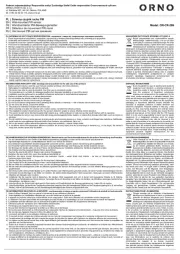
11 Augustus 2025
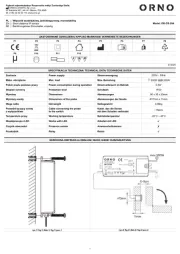
11 Augustus 2025
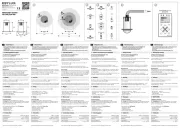
6 Juli 2025
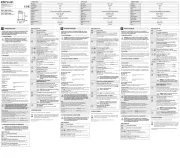
6 Juli 2025
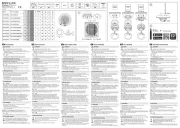
5 Juli 2025

5 Juli 2025
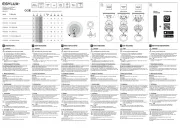
5 Juli 2025
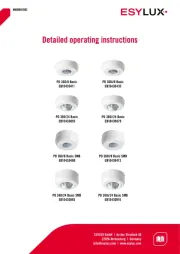
5 Juli 2025